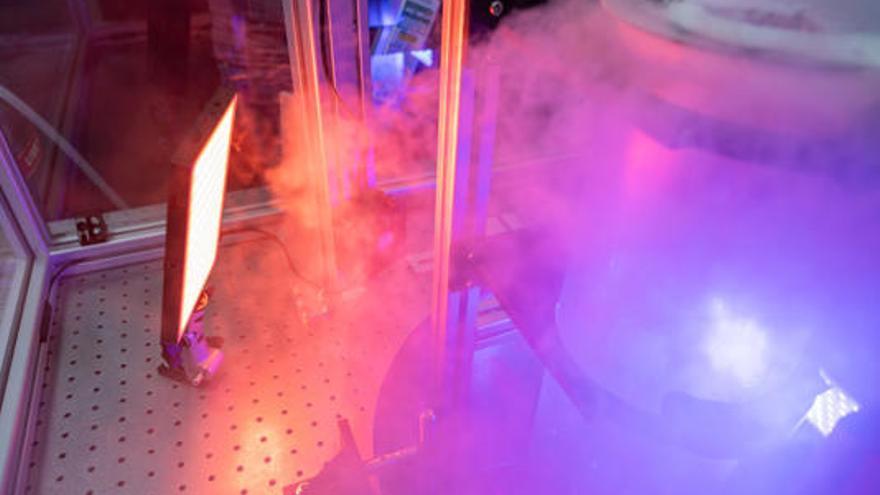Physicists have created for the first time a laboratory “quantum tornado” of liquid helium that can replicate the behavior of space-time and perhaps detect whether wormholes form next to black holes.
Related
Scientists at the University of Nottingham, in collaboration with King's College London and the University of Newcastle, have created a quantum vortex inside superliquid helium at extremely low temperatures in the laboratory.
The vortex, an experimental platform, exhibits physical properties similar to those found in a black hole's massive gravitational field, the team reported in the journal Nature, which will allow us to observe in more detail how similar black holes behave and interact with their cosmic mass. environment. .
There are about 100 million black holes in the Milky Way Galaxy. It is known that these high-mass objects can bend space-time and eventually open a coil Time tunnel To other worlds. Thanks to this experiment, perhaps we can discover whether these… Wormholes They really exist.
Quantum scale
A quantum hurricane is a phenomenon that occurs in quantum systems, such as superfluid helium, at temperatures close to absolute zero.
Unlike a conventional tornado, which forms from the interaction of hot and cold air streams, a quantum tornado forms in a quantum fluid and is a manifestation of large-scale quantum mechanics.
Quantum tornadoes are important because they allow the effects of quantum mechanics to be studied in a controlled environment.
By observing how these vortices behave, scientists can gain valuable information about the interaction of quantum particles and how they can affect the understanding of astrophysical phenomena.
Super fluid with swirls
To create a quantum tornado, researchers cool helium Super liquidIt is a state of matter with zero viscosity in which molecules behave according to the laws of quantum mechanics. In this case, helium can flow without resistance, allowing stable vortices to form.
Scientists use Special techniques To generate a vortex in a superfluid. This vortex resembles a tornado, but instead of air it consists of quantum particles orbiting a central point.
The rotation of these particles creates a vortex flow with unique properties that can be studied to better understand complex phenomena.
Black hole model
In the University of Nottingham experiment, the quantum hurricane created in superfluid helium served as a model for studying the dynamics of the universe. black holes.
By analyzing the surface waves generated by the vortex, the researchers were able to simulate how matter and energy interact around a black hole in the universe.
Superfluid helium, cooled to temperatures below -271°C, acquires unusual quantum properties that normally prevent the formation of giant eddies in other quantum liquids. However, the superfluid helium interface acts as a stabilizing force for these objects.
more details
Patrick Svankaralead author of the study, He explains The use of superfluid helium made it possible to study small surface waves using it More detail and accuracy Compared to previous experiments conducted in water.
He adds that the extremely low viscosity of superfluid helium has facilitated a careful investigation of its interaction with the quantum vortex and comparison of the results with own theoretical predictions.
In this experiment, the researchers were able to confine tens of thousands of quanta into a compact body resembling a small tornado, achieving a vortex flow with unprecedented strength in the world of quantum fluids.
This achievement revealed interesting parallels between vortex flow and the gravitational influence of black holes on the surrounding spacetime.
More precision in the future
The researchers point out that this achievement represents an important step towards more accurate simulation of finite-temperature quantum field theories within the complex field of curved space-time.
Moreover, they add, it represents a crucial moment in understanding some of the strangest and most challenging phenomena that are often difficult, if not impossible, to study in any other way.
The success of this research paves the way for further exploration of the behavior of quantum fluids and their interactions with strong gravitational forces, which could lead to more accurate predictions in astrophysics, the authors of this work conclude.
reference
Rotating curved space-time signatures of a giant quantum vortex. Patrick Savantara et al. Nature (2024). doi:https://doi.org/10.1038/s41586-024-07176-8





